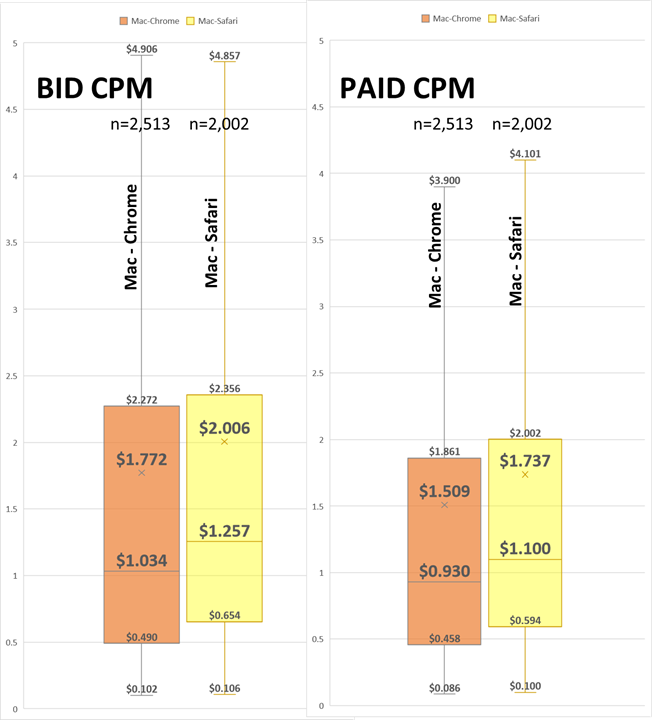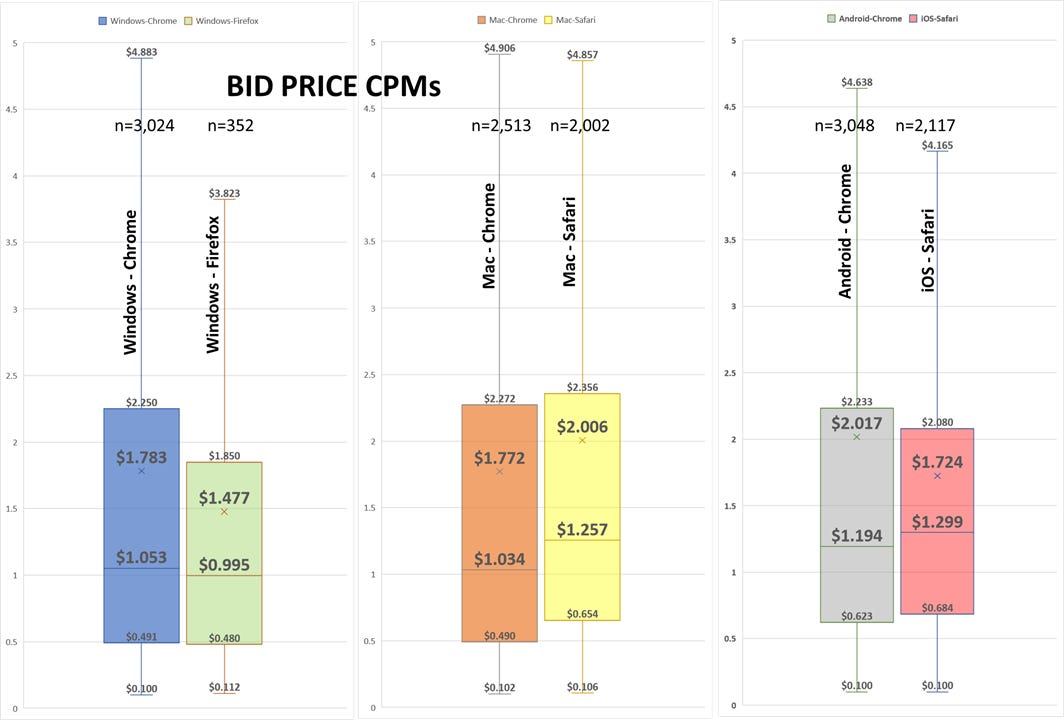Media CPMs (CPMs paid to publisher) Does Not Differ Much Between Tracking Protection Browsers vs Tracking Browsers
I wanted to get some publishers to chime in on this topic. It is frequently believed that tracking protection browsers like Firefox and Safari command lower CPMs than non-tracking browsers like Chrome.
What you will see below are CPM prices (bid CPM and CPM paid) for specific browsers. These are MEDIA CPMs only, and deliberately exclude audience segment, targeting parameters, and verification CPMs that cost extra. This study focuses only on media CPMs that the publishers will receive.
The observations include:
while Windows - Firefox is lower in CPM than Windows - Chrome it is not significantly less (the line is median, the X is mean)
Mac - Safari is higher than Mac - Chrome on both median and mean CPMs; Safari has tracking protection while Chrome does not.
iOS - Safari is higher on the median than Android - Chrome but lower on the mean (average). Virtually all users of iOS use iOS Safari.
The data shows that tracking protection browsers (like Firefox and Safari) do not yield noticeably lower CPMs for publishers than tracking browsers like Chrome and Android-Chrome. This suggests that adding tracking does not benefit publishers by increasing their revenue; all or most of the incremental CPM paid by the marketers are for audience segments, targeting parameters, and verification and accrue to the ad tech companies, not to the publishers. Can you comment here or email me to let me know if your observations differ?
Below are the bid prices grouped together, and then price paid CPMs grouped together.








